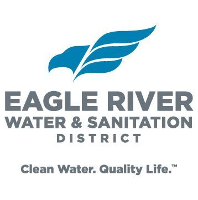AI Drives Energy Transformation in Latin America – Mexico Business News

Report on Artificial Intelligence Integration in the Energy Sector of Latin America and the Caribbean and its Alignment with Sustainable Development Goals
1.0 Introduction: AI as a Catalyst for Sustainable Energy Systems
A collaborative report by Stimson Fellows, CAF, and Microsoft details the transformative impact of Artificial Intelligence (AI) on the energy sector in Latin America and the Caribbean. The analysis indicates that AI is a critical tool for advancing several Sustainable Development Goals (SDGs), particularly SDG 7 (Affordable and Clean Energy) and SDG 13 (Climate Action). The report provides evidence-based guidance for policymakers to ensure the responsible deployment of AI, accelerating the transition toward cleaner, more resilient, and inclusive energy systems. It evaluates structural changes in energy demand driven by digital infrastructure, such as data centers, and their implications for grid efficiency and long-term sustainable planning.
2.0 AI Applications Advancing SDG 7 and SDG 13
The integration of AI is directly supporting the region’s progress toward key sustainable energy and climate targets. The technology’s applications are enhancing operational efficiency and system resilience, which are fundamental to achieving national decarbonization plans.
- Renewable Energy Integration (SDG 7.2): AI-powered forecasting optimizes the use of renewable energy sources, facilitating their integration into national grids.
- Energy Efficiency (SDG 7.3): Advanced grid management, predictive maintenance for energy infrastructure, and the use of digital twins improve overall system efficiency.
- Resilient Infrastructure (SDG 9.1): AI contributes to the development of more resilient and reliable energy infrastructure, capable of managing the complexities of decentralized energy models.
The report highlights the necessity of human oversight and transparency in algorithmic decision-making to ensure that technological advancements align with equity goals and climate strategies, reinforcing the principles of SDG 10 (Reduced Inequalities).
3.0 Regional Implementation and Case Studies
Several countries in the region are leveraging AI to modernize their energy sectors, demonstrating tangible progress towards the SDGs.
- Chile: Has successfully integrated AI-based renewable forecasting to optimize the utilization of clean energy, directly contributing to SDG 7.
- Brazil, Uruguay, and Mexico: Are applying AI for grid modernization and strategic infrastructure planning, which supports SDG 9 (Industry, Innovation, and Infrastructure).
- Mexico (Queretaro): The proliferation of data centers has established the country as a digital hub. However, this growth presents challenges related to SDG 6 (Clean Water and Sanitation) and SDG 7, necessitating policies that balance digital expansion with sustainable resource management.
4.0 Policy Recommendations for Sustainable and Inclusive Growth
To mitigate the environmental impact of digitalization and maximize AI’s benefits, the report proposes several policy recommendations aligned with the SDG framework.
- Standardized Disclosure: Mandate standardized reporting on energy and water consumption for data center operators to promote accountability and support SDG 12 (Responsible Consumption and Production).
- Incentivize Renewable Integration: Link incentives for digital infrastructure development to the use of renewable energy, directly advancing SDG 7 and SDG 13.
- Promote Community Benefits: Ensure digital expansion delivers measurable community benefits, such as workforce training and shared infrastructure, contributing to SDG 8 (Decent Work and Economic Growth) and SDG 11 (Sustainable Cities and Communities).
5.0 Governance and Partnerships for the Goals (SDG 17)
The report underscores that effective governance and cross-border collaboration are essential for harnessing AI responsibly. These efforts exemplify SDG 17 (Partnerships for the Goals).
- Regional Council for AI Ethics: An initiative by CAF and UNESCO is assisting governments in designing and implementing ethical AI policies, focusing on talent development and regulatory frameworks.
- High-Performance Computing Network: CAF is coordinating a regional network, starting in Chile and the Dominican Republic, to reduce capacity gaps and strengthen regulatory capabilities, thereby reinforcing SDG 9.
The roadmap for 2024–2025 prioritizes AI governance and regulation with an emphasis on digital security and accountability. The report concludes that for the expanding digital ecosystem to support sustainable economic development, the growth of data centers must advance in parallel with renewable energy integration and community-level participation.
Analysis of SDGs, Targets, and Indicators
1. Which SDGs are addressed or connected to the issues highlighted in the article?
-
SDG 7: Affordable and Clean Energy
- The article focuses on using AI to “accelerate the shift toward cleaner” energy systems and as a “driver of renewable energy integration.” It mentions specific applications like “AI-based renewable forecasting to optimize clean energy usage” in Chile and incentives for “renewable integration.”
-
SDG 9: Industry, Innovation and Infrastructure
- The text discusses building “more resilient” energy systems through technological innovation (AI). It highlights the need for “grid modernization,” “long-term infrastructure planning,” and the expansion of “digital infrastructure” like data centers and a “regional high-performance computing network.”
-
SDG 13: Climate Action
- The article directly connects the deployment of AI in the energy sector with climate goals, stating the need to “align technological deployment with… climate strategies” and support “national decarbonization plans.”
-
SDG 6: Clean Water and Sanitation
- The growth of data centers, particularly in Queretaro, Mexico, raises concerns about resource use. The article explicitly states this growth “requires monitoring of water and energy consumption” and recommends “standardized disclosure on energy and water use for operators.”
-
SDG 11: Sustainable Cities and Communities
- The report emphasizes making energy systems “more inclusive” and highlights the importance of “community participation” and “community-level participation.” It recommends policies that ensure “measurable community benefits such as workforce training and shared infrastructure.”
-
SDG 16: Peace, Justice and Strong Institutions
- The article underscores the importance of governance, mentioning “regional governance,” “policy debates,” and the need for “transparency and human oversight in algorithmic decision-making.” The establishment of the “Regional Council for the Implementation of the Recommendation on the Ethics of AI” by CAF and UNESCO to support governments in designing policies is a key example of building effective institutions.
-
SDG 17: Partnerships for the Goals
- The entire initiative described in the article is a multi-stakeholder partnership. It is a collaborative report by “Stimson Fellows and CAF, in collaboration with Microsoft.” It also mentions partnerships between “CAF and UNESCO” and the importance of “cross-border collaboration” to advance the digital ecosystem.
2. What specific targets under those SDGs can be identified based on the article’s content?
-
Target 7.2: By 2030, increase substantially the share of renewable energy in the global energy mix.
- The article’s focus on AI as a “driver of renewable energy integration” and its use for “renewable energy forecasting to optimize clean energy usage” directly supports this target.
-
Target 9.1: Develop quality, reliable, sustainable and resilient infrastructure, including regional and transborder infrastructure, to support economic development and human well-being.
- The discussion on creating “more resilient” energy systems, “grid modernization,” and “long-term infrastructure planning” aligns with the goal of developing reliable and resilient infrastructure.
-
Target 9.4: By 2030, upgrade infrastructure and retrofit industries to make them sustainable, with increased resource-use efficiency and greater adoption of clean and environmentally sound technologies.
- The use of AI for “predictive maintenance,” “advanced grid management,” and increasing “operational efficiency” and “resource utilization” directly contributes to upgrading infrastructure with clean and efficient technologies.
-
Target 6.4: By 2030, substantially increase water-use efficiency across all sectors.
- The recommendation for “standardized disclosure on… water use” for data center operators and the need for “monitoring of water and energy consumption” are measures aimed at improving water-use efficiency in the growing digital sector.
-
Target 13.2: Integrate climate change measures into national policies, strategies and planning.
- The article explicitly states that the recommendations “align with national decarbonization plans and digital inclusion strategies” and that technology must align with “climate strategies.”
-
Target 17.17: Encourage and promote effective public, public-private and civil society partnerships.
- The collaboration between Stimson Fellows (civil society/think tank), CAF (development bank), Microsoft (private sector), and UNESCO (public international organization) is a clear example of the multi-stakeholder partnership model promoted by this target.
3. Are there any indicators mentioned or implied in the article that can be used to measure progress towards the identified targets?
-
Indicator for Target 7.2: Share of renewable energy.
- This is implied by the article’s discussion of “renewable energy integration” and using AI to “optimize clean energy usage.” Progress could be measured by the percentage increase in renewable energy in the grid.
-
Indicator for Target 6.4: Data on water and energy consumption.
- The article explicitly recommends “standardized disclosure on energy and water use for operators.” This disclosed data would serve as a direct indicator to measure and monitor water and energy efficiency (sustainability metrics) of data centers.
-
Indicator for Target 11.a: Policies for community benefits.
- The recommendation for “measurable community benefits such as workforce training and shared infrastructure” implies that the number of people trained or the extent of shared infrastructure developed could be used as indicators to measure progress towards inclusive development.
-
Indicator for Target 16: Implementation of ethical AI policies.
- The establishment of the “Regional Council for the Implementation of the Recommendation on the Ethics of AI” and its collaboration with seven countries on “regulatory experimentation pilots” implies that the number of countries adopting and implementing ethical AI regulations can be an indicator of institutional strengthening.
Table of SDGs, Targets, and Indicators
| SDGs | Targets | Indicators |
|---|---|---|
| SDG 7: Affordable and Clean Energy | 7.2: Increase substantially the share of renewable energy in the global energy mix. | (Implied) The share and optimized usage of renewable energy in the energy grid, supported by AI forecasting. |
| SDG 9: Industry, Innovation and Infrastructure | 9.1: Develop quality, reliable, sustainable and resilient infrastructure. 9.4: Upgrade infrastructure and retrofit industries to make them sustainable. |
(Implied) Investment in and modernization of grid infrastructure; increased operational efficiency and resource utilization through AI applications. |
| SDG 13: Climate Action | 13.2: Integrate climate change measures into national policies, strategies and planning. | (Implied) Alignment of AI deployment in the energy sector with national decarbonization plans and climate strategies. |
| SDG 6: Clean Water and Sanitation | 6.4: Substantially increase water-use efficiency across all sectors. | (Mentioned) Standardized disclosure and monitoring of water and energy consumption by data center operators. |
| SDG 11: Sustainable Cities and Communities | 11.a: Support positive economic, social and environmental links… by strengthening national and regional development planning. | (Mentioned) Implementation of policies for measurable community benefits, such as the number of people receiving workforce training or the extent of shared infrastructure. |
| SDG 16: Peace, Justice and Strong Institutions | (General) Develop effective, accountable and transparent institutions at all levels. | (Implied) Number of governments designing and executing ethical AI policies with support from the Regional Council. |
| SDG 17: Partnerships for the Goals | 17.17: Encourage and promote effective public, public-private and civil society partnerships. | (Implied) The existence and operation of multi-stakeholder partnerships (e.g., Stimson, CAF, Microsoft, UNESCO) to advance technology and policy. |
Source: mexicobusiness.news
What is Your Reaction?
 Like
0
Like
0
 Dislike
0
Dislike
0
 Love
0
Love
0
 Funny
0
Funny
0
 Angry
0
Angry
0
 Sad
0
Sad
0
 Wow
0
Wow
0




















































.jpg.webp?itok=0ZsAnae9#)

























